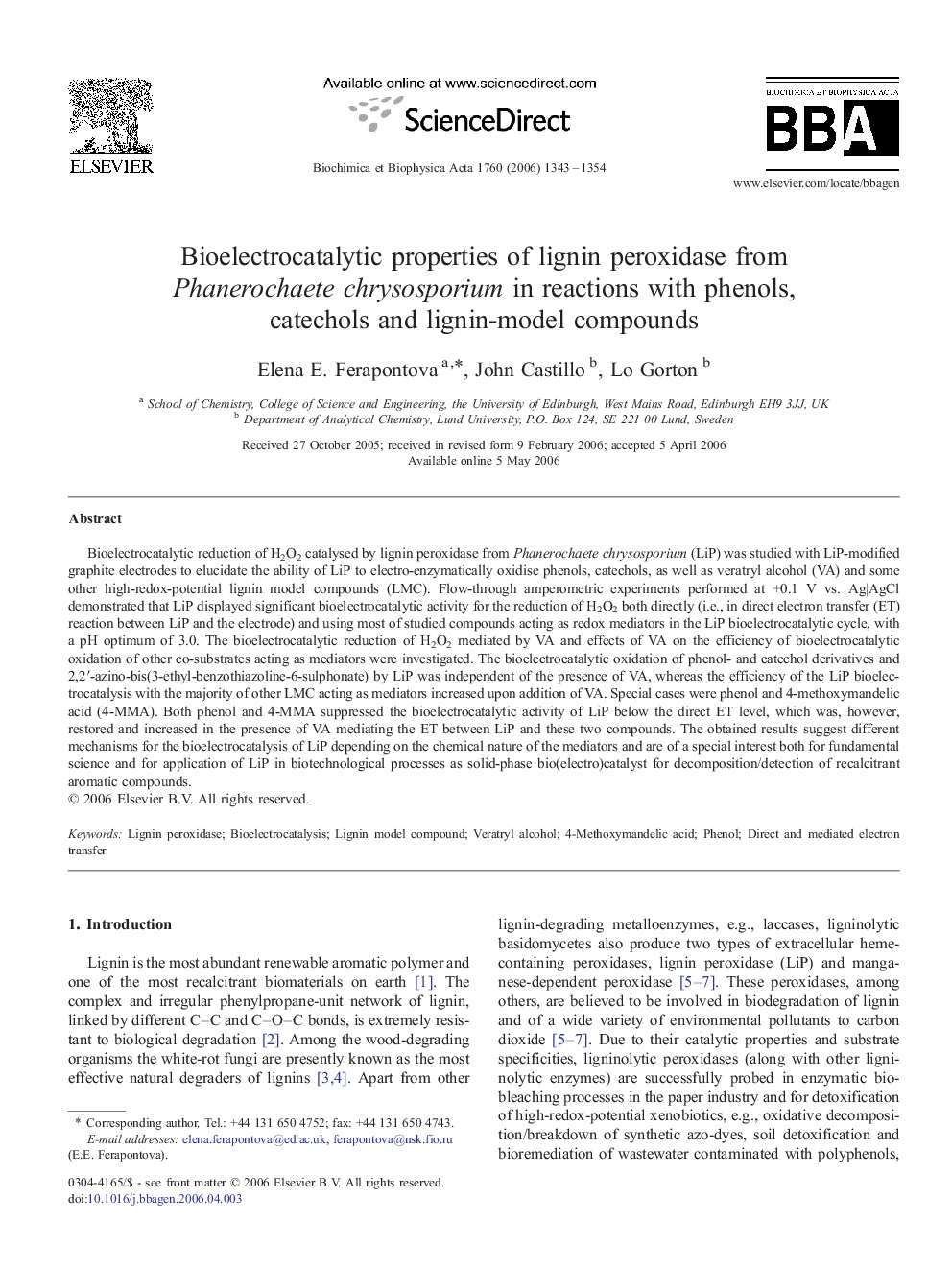| کد مقاله | کد نشریه | سال انتشار | مقاله انگلیسی | نسخه تمام متن |
|---|---|---|---|---|
| 1948727 | 1054708 | 2006 | 12 صفحه PDF | دانلود رایگان |

Bioelectrocatalytic reduction of H2O2 catalysed by lignin peroxidase from Phanerochaete chrysosporium (LiP) was studied with LiP-modified graphite electrodes to elucidate the ability of LiP to electro-enzymatically oxidise phenols, catechols, as well as veratryl alcohol (VA) and some other high-redox-potential lignin model compounds (LMC). Flow-through amperometric experiments performed at +0.1 V vs. Ag|AgCl demonstrated that LiP displayed significant bioelectrocatalytic activity for the reduction of H2O2 both directly (i.e., in direct electron transfer (ET) reaction between LiP and the electrode) and using most of studied compounds acting as redox mediators in the LiP bioelectrocatalytic cycle, with a pH optimum of 3.0. The bioelectrocatalytic reduction of H2O2 mediated by VA and effects of VA on the efficiency of bioelectrocatalytic oxidation of other co-substrates acting as mediators were investigated. The bioelectrocatalytic oxidation of phenol- and catechol derivatives and 2,2′-azino-bis(3-ethyl-benzothiazoline-6-sulphonate) by LiP was independent of the presence of VA, whereas the efficiency of the LiP bioelectrocatalysis with the majority of other LMC acting as mediators increased upon addition of VA. Special cases were phenol and 4-methoxymandelic acid (4-MMA). Both phenol and 4-MMA suppressed the bioelectrocatalytic activity of LiP below the direct ET level, which was, however, restored and increased in the presence of VA mediating the ET between LiP and these two compounds. The obtained results suggest different mechanisms for the bioelectrocatalysis of LiP depending on the chemical nature of the mediators and are of a special interest both for fundamental science and for application of LiP in biotechnological processes as solid-phase bio(electro)catalyst for decomposition/detection of recalcitrant aromatic compounds.
Journal: Biochimica et Biophysica Acta (BBA) - General Subjects - Volume 1760, Issue 9, September 2006, Pages 1343–1354